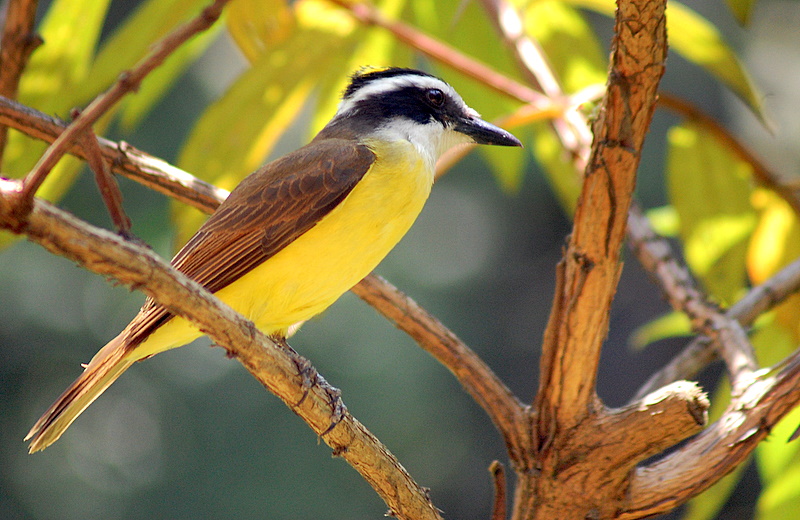


The great kiskadee (Pitangus sulphuratus) is among the most commonly seen species in the cities surveyed (photo: Dario Sanches/Wikimedia Commons)
Published on 09/23/2024
Agência FAPESP – Researchers from the São Paulo State University’s Institute of Biosciences (IB-UNESP) in Rio Claro conducted a study comparing how residents of the cities of Bauru (also in São Paulo) and Belo Horizonte (state of Minas Gerais) perceive the bird species that inhabit these places.
The aim was to find out if the participants in the survey recognized the most and least commonly seen species in these cities, located in the so-called Neotropical region – which stretches from Central America to South America, including part of southern Mexico and the Baja California peninsula, as well as islands in the Caribbean.
The Neotropical region, which includes Brazil, has a great diversity of birds that play important roles in maintaining the functioning of urban ecosystems.
To find the answer, residents responded to an online questionnaire that contained images and songs of birds to be identified, as well as questions about whether they knew the importance of birds to the functioning of the urban ecosystem and what feelings (positive and negative) they ascribed to birds.
The researcher Gabriela Graviola, who led the study, informed the UNESP press office that the most commonly seen bird species in Bauru and Belo Horizonte include the great kiskadee, pionus, eared dove, rock dove, and ruddy ground dove.
In general, residents of both cities recognize the importance of birds to the functioning of the urban ecosystem and associate positive feelings with most species. “However, birds such as the rock dove are associated with bad feelings, such as disgust and illness,” comments researcher João Carlos Pena, co-author of the study.
The study was supported by FAPESP through seven projects (13/50421-2; 20/01779-5; 21/06668-0; 21/08322-3; 21/08534-0; 21/10195-0; 21/10639-5) and published in the journal Birds.
The results show that the participants were able to recognize the illustrations of the most common birds in both cities, but the same was not true for the birds’ songs. According to the authors, this may be related to high noise pollution or the dynamic life in large cities, which reduces the ability to perceive the environment in a multisensory way.
However, the researchers point out that because the study was conducted during the pandemic and only used online questionnaires, only a portion of the population was included.
According to Milton Ribeiro, professor at IB-UNESP and one of the authors of the article, “generating knowledge about how citizens perceive urban biodiversity is essential for developing strategies for planning environments where the human population and fauna can interact, ensuring better support for biodiversity conservation in cities.”
The article "Human Perception of Birds in Two Brazilian Cities" can be read at: www.mdpi.com/2673-6004/5/2/14.
Source: https://agencia.fapesp.br/52840